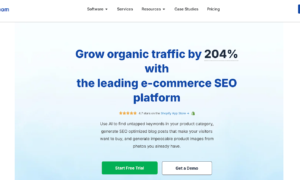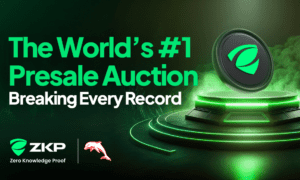Marketplace platform basically brings a whole bunch of sellers together under one virtual roof, so you can browse all their products and services in one convenient place. No more tabbing through 20 different seller sites!
It’s like an online mall where any seller can easily sign up and list whatever they’re selling. They load up their product details, descriptions, pricing, photos – the whole nine yards. As a buyer, you just hop on the marketplace and can see aggregated listings from all these different sellers side-by-side.
These platforms create a centralized online “marketplace” that directly connects buyers like us with third-party sellers for transactions. The really popular ones are places like Amazon for pretty much any consumer product you can think of, or Uber for hiring rideshare drivers, or Fiverr if you need freelance gig workers for projects. But there are marketplaces out there for all sorts of niche products and services these days too.
It’s just a super convenient way to have a massive selection from numerous sellers compiled in one digital space, rather than having to separately visit each of their individual websites or storefronts.
How Marketplace Platforms work?
To become a seller on these platforms, an individual or business signs up and gets approved. They can then add listings for all the products or services they wish to make available, along with key details like specs, images, rates, and policies.
On the buyer side, users can search or browse through the cumulative catalog of listings from various sellers. They get an expansive selection in a single marketplace rather than hopping between separate seller sites. Buyers can compare various sellers’ offerings side-by-side, along with studying seller ratings and reviews from past customers.
Once a buyer finds a desirable listing, they can securely purchase it through the marketplace’s checkout system. The platform processes the payment from the buyer, deducting a commission fee, while sending the remaining amount to the respective seller.
The marketplace also provides tools allowing communication between the specific buyer and seller for coordinating fulfillment. The seller then ships the purchased product directly to the buyer or renders the purchased service as applicable.
Benefits for Buyers
Marketplace platforms offer key advantages that draw buyers:
- Vast selection across many product/service categories in one place
- Ability to compare options and pricing across multiple sellers easily
- Competitive prices from various sellers vying for buyers
- Convenience of a centralized online shopping experience
- Secure purchasing process with buyer protections like returns/refunds
- Access to seller ratings/reviews to assess credibility
- Often can get better deals through the platforms’ bargaining power
Benefits for Sellers
These platforms are also very beneficial for sellers, such as:
- Access to a ready marketplace of active buyers to reach
- No need to build and promote their own standalone website
- Tools to efficiently list items, manage inventory and orders
- Only pay fees when actually making sales, not upfront costs
- Gain visibility and build reputation through reviews
- Leverage the platform’s payment processing, shipping integrations, etc.
By joining a well-established marketplace, sellers can tap into its existing customer base without having to develop full ecommerce capabilities themselves.
Benefits for Platform Operators
The companies operating these marketplace platforms likewise reap compelling benefits driving their success:
- Revenue from transaction fees without inventory carrying costs
- More sellers attracts more buyers, and vice versa, creating growth loops
- Can add complementary revenue streams like ads, premium services
- Gain rich data insights about market needs and user behaviors
- Asset-light, scalable business model with limited overhead
- First-mover advantages and brand equity in certain verticals
Dominant firms like Amazon, Uber and Airbnb reached multi-billion dollar valuations largely through their marketplace platform business models.
Key Platform Features
While features vary, most leading marketplace platforms provide:
- Seller onboarding portals to get listed and tools to update listings
- Detailed product/service catalogs with rich search/browsing for buyers
- Shopping carts, secure payments, and straightforward checkout flows
- Ratings/reviews system building trust between buyers and sellers
- Shipping/delivery management for tracking of physical goods
- Mobile apps and responsive design for on-the-go access
- Messaging for buyer/seller coordination on orders
- Dashboards with analytics for both the buyers and sellers
By combining these types of capabilities into an integrated online environment, marketplace platforms facilitate streamlined ecommerce between dispersed sellers and buyers at massive scale.
The Thriving Marketplace Economy
Online marketplace platforms enabling commerce between third-parties have proliferated rapidly in recent years. This “marketplace economy” model disrupts conventional business approaches across industries.
More sellers join these platforms to easily access larger customer bases than they could alone. More buyers shift their spending to marketplaces for greater selection, value and convenience than traditional channels.
Existing major players constantly diversify into new product categories and geographies. Meanwhile, new niche marketplaces keep launching to serve micro-segments like handmade goods, freelance labor, vintage items and more.
As technology and consumer trends evolve further, analysts forecast the marketplace platform model’s growth will accelerate. Their unique ability to seamlessly combine longstanding sellers and buyers creates powerful economies of scale, well-positioning them for ecommerce’s future.



































